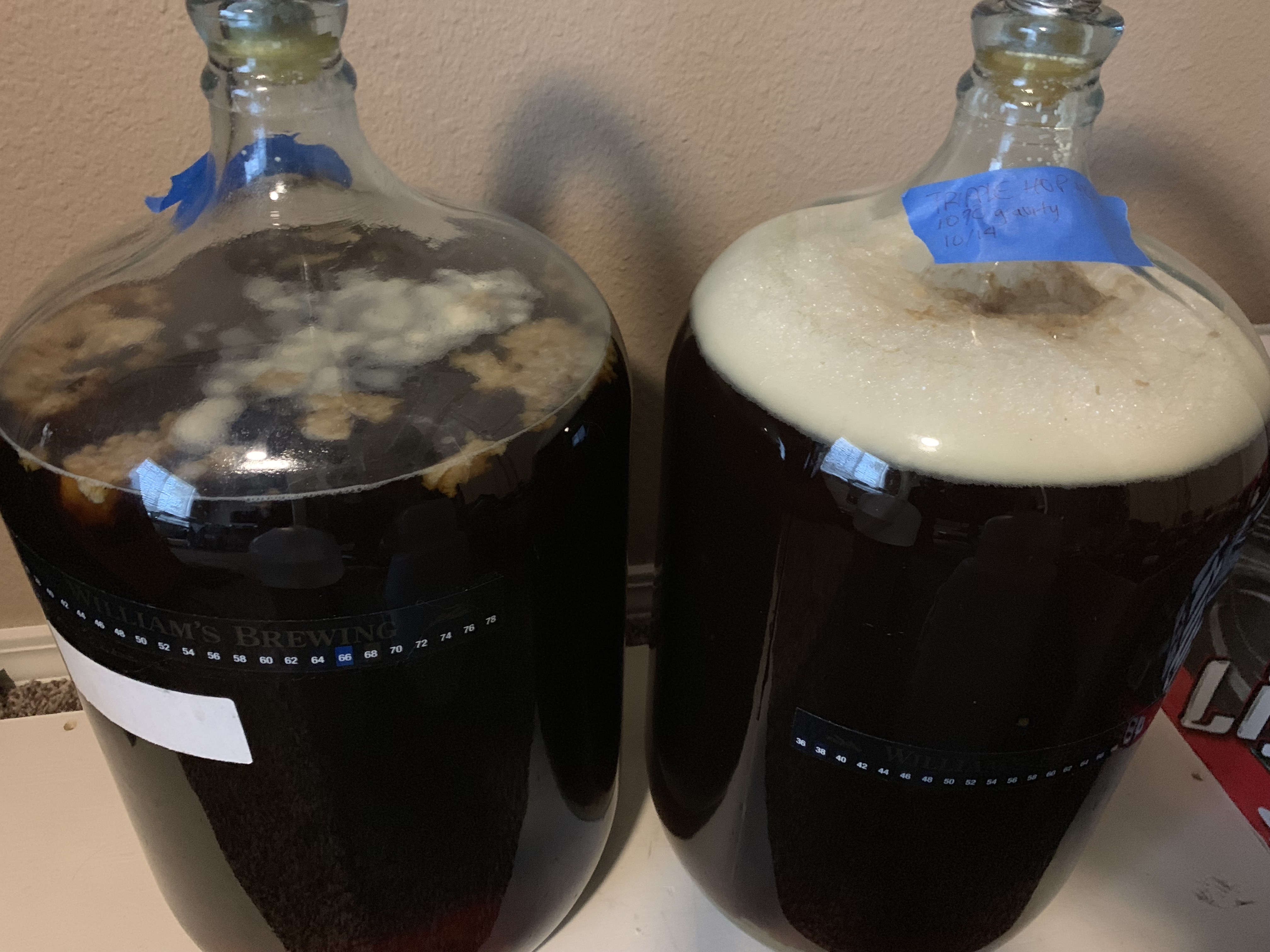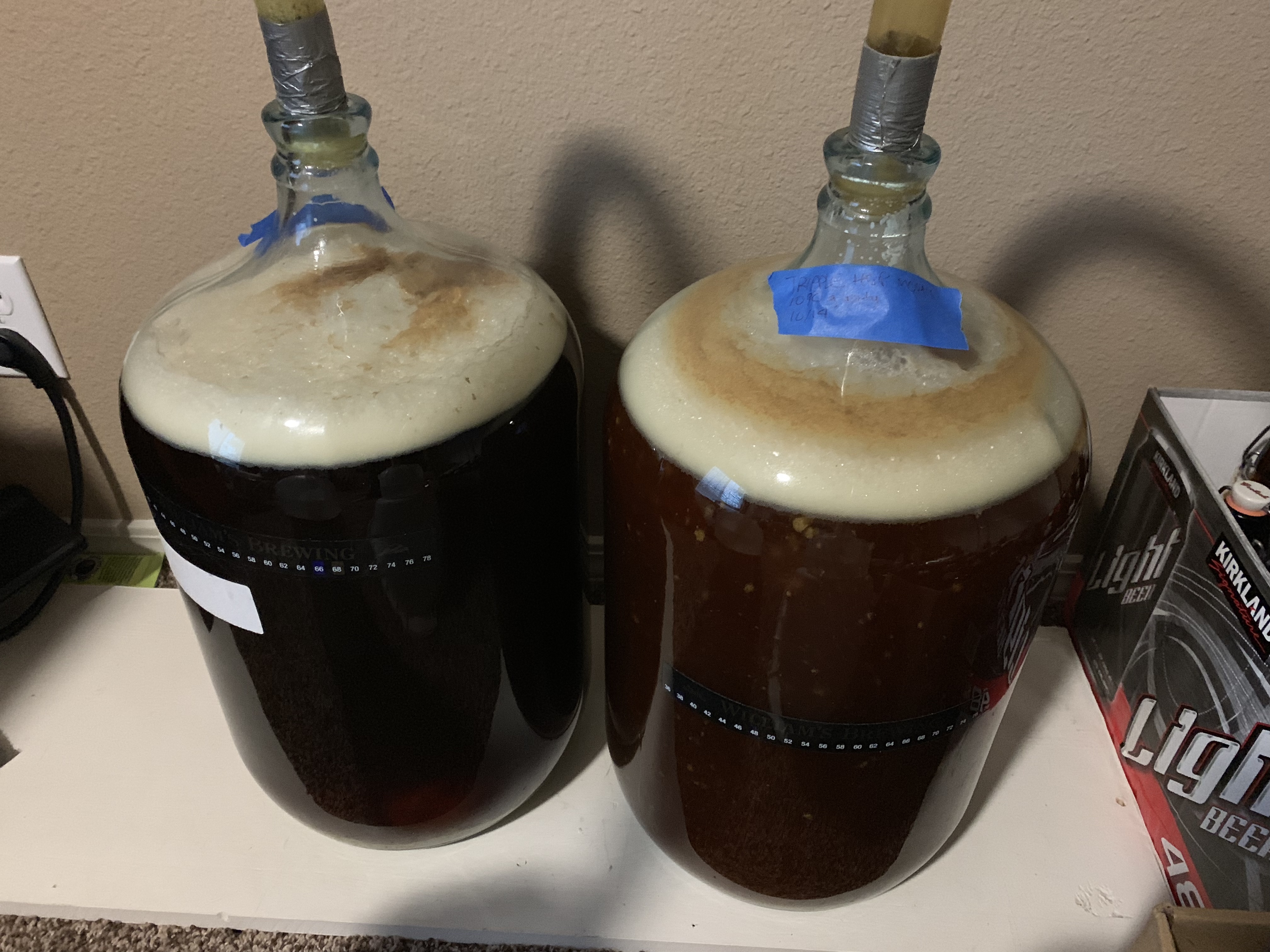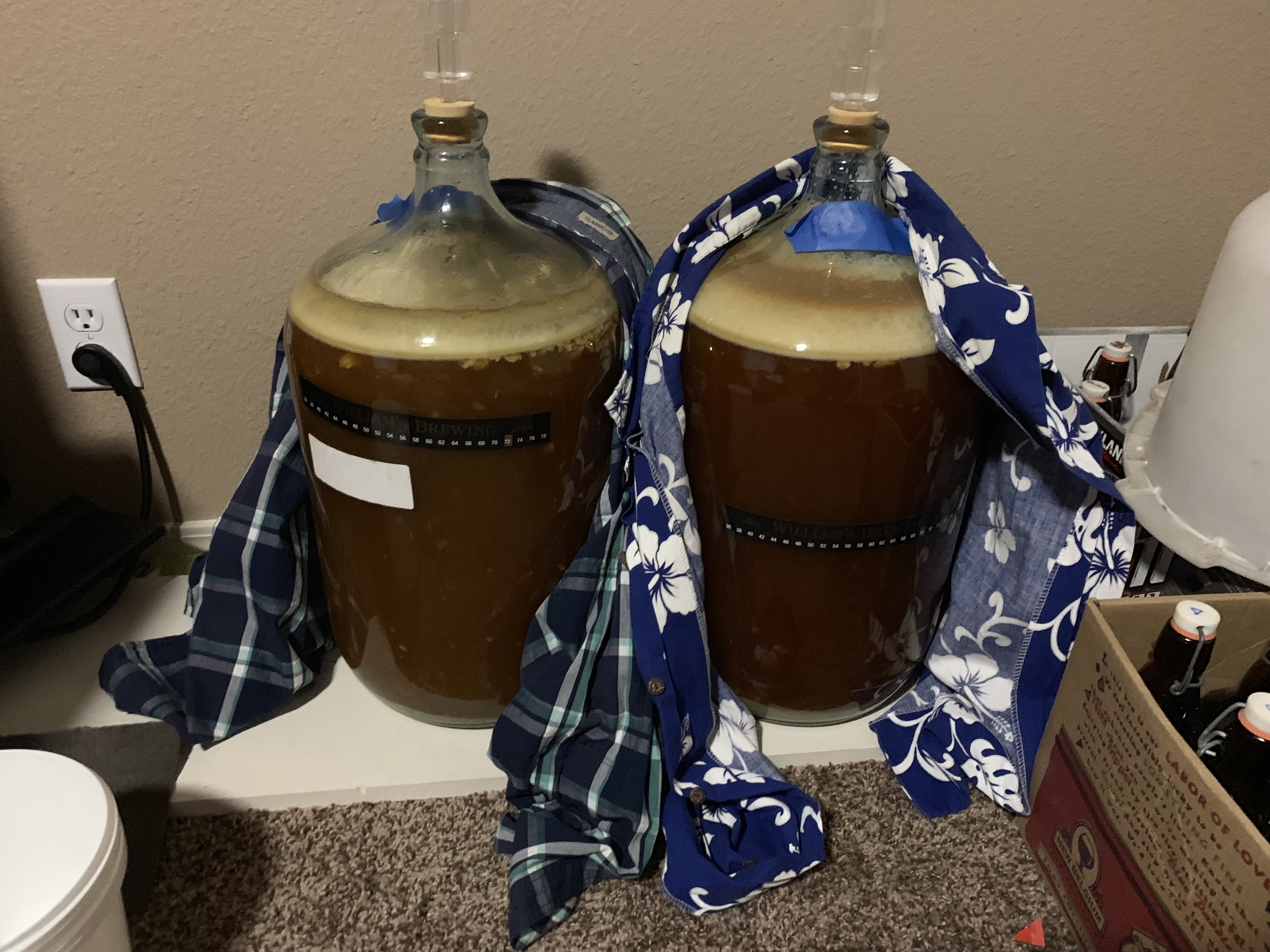fendersrule
Well-Known Member
- Joined
- Oct 11, 2018
- Messages
- 703
- Reaction score
- 341
Hi everyone,
Glad to be onboard.
I purchased a beer brewing system from my friend at work since he's retiring. I've got a 15 gallon boil pot, 2x 5-gallon carboys, chiller, 6 gallon food-grade bucket, grinder, bottle-capper, etc. Basically, all I need.
He came over 2 weeks ago and helped me make my first batch of beer. Essentially, I made two 5-gallon batches in the 15 gallon pot. Just your standard noobie amber ale, 6% ABV, one low hop, and one high hop batch. He's a believer of using liquid extract just because it's easier/faster. Not sure of the benefit of using the full-grain method quite yet, but I'm sure I'll dive into that soon.
I just bottled it all last night. Seemed to go really well. The low hop beer didn't foam much. The high hop beer foamed pretty good. It's now on it's 2-week bottling period. Bottling is really a two person operation!
So guess what? I'm ready to make more beer already!
I'm thinking this time I'd like to step up to a Pale Ale or an IPA. I'd like to continue using liquid extract. I've already obtained a recipe for a habanero IPA. I figure I'd make one batch spicy, and one batch with a fruity finish (blackberry).
So for that, I'd like to upgrade myself into using secondaries. It's my understanding that they a) create clearer/cleaner beer, and b) allow for better/cleaner finishing if you'd like to add fruits/spices. They are also good for aging which can allow you to be more lazy for when you have to bottle. This is my current understanding, anyhow. Has anyone done experiments on beer color and test using primaries vs secondaries?
Questions:
1) My first thought is to buy two 6.5 gallon carboys which will now be my new primaries. Bonus: more beer! Being that I have a 15 gallon boil pot, 2 x 6.5 gallon carboys (primary) and 2 x 5 gallon carboys (secondary), how much water should I plan on putting in the boil pot from here on out? Do I shoot for about 13 gallons to allow space for boiling?
2) What is the best way to add habaneros to the beer? I've read there's two methods. You open-flame the habaneros, cut them in half, freeze them, and then add them for a few days in the secondary. OR, you infuse them with vodka, and pour the vodka straight in the secondary. About how much? I guess a point of reference is that I enjoyed the spice level of the Ballast Point Habanero Sculpin. It could be a little spicier, but it was sure a fine beer for being spicy and spicier than most mainstream craft beers.
3) Should I continue to use manual siphon techniques, or should I upgrade to a siphon pump for $10? Manual siphone techniques are fine for me, but they do take more time and require a "splurge" bucket to use. Is it worth to upgrade and to not look back?
4) I do not use a gravity gauge or any other tool whilst beer is in the primary. I just wait until the "burps" are far in-between. I removed my last batched from the primary to bottling after 10 days, in which the burps were 1 in every 5 minutes. Is it worth measuring gravity or other things, or is that considered more advanced techniques.
5) I'm curious what the difference is for an IPA that has been made in primary only vs primary + secondary. Is the colour and taste different?
Glad to be onboard.
I purchased a beer brewing system from my friend at work since he's retiring. I've got a 15 gallon boil pot, 2x 5-gallon carboys, chiller, 6 gallon food-grade bucket, grinder, bottle-capper, etc. Basically, all I need.
He came over 2 weeks ago and helped me make my first batch of beer. Essentially, I made two 5-gallon batches in the 15 gallon pot. Just your standard noobie amber ale, 6% ABV, one low hop, and one high hop batch. He's a believer of using liquid extract just because it's easier/faster. Not sure of the benefit of using the full-grain method quite yet, but I'm sure I'll dive into that soon.
I just bottled it all last night. Seemed to go really well. The low hop beer didn't foam much. The high hop beer foamed pretty good. It's now on it's 2-week bottling period. Bottling is really a two person operation!
So guess what? I'm ready to make more beer already!
I'm thinking this time I'd like to step up to a Pale Ale or an IPA. I'd like to continue using liquid extract. I've already obtained a recipe for a habanero IPA. I figure I'd make one batch spicy, and one batch with a fruity finish (blackberry).
So for that, I'd like to upgrade myself into using secondaries. It's my understanding that they a) create clearer/cleaner beer, and b) allow for better/cleaner finishing if you'd like to add fruits/spices. They are also good for aging which can allow you to be more lazy for when you have to bottle. This is my current understanding, anyhow. Has anyone done experiments on beer color and test using primaries vs secondaries?
Questions:
1) My first thought is to buy two 6.5 gallon carboys which will now be my new primaries. Bonus: more beer! Being that I have a 15 gallon boil pot, 2 x 6.5 gallon carboys (primary) and 2 x 5 gallon carboys (secondary), how much water should I plan on putting in the boil pot from here on out? Do I shoot for about 13 gallons to allow space for boiling?
2) What is the best way to add habaneros to the beer? I've read there's two methods. You open-flame the habaneros, cut them in half, freeze them, and then add them for a few days in the secondary. OR, you infuse them with vodka, and pour the vodka straight in the secondary. About how much? I guess a point of reference is that I enjoyed the spice level of the Ballast Point Habanero Sculpin. It could be a little spicier, but it was sure a fine beer for being spicy and spicier than most mainstream craft beers.
3) Should I continue to use manual siphon techniques, or should I upgrade to a siphon pump for $10? Manual siphone techniques are fine for me, but they do take more time and require a "splurge" bucket to use. Is it worth to upgrade and to not look back?
4) I do not use a gravity gauge or any other tool whilst beer is in the primary. I just wait until the "burps" are far in-between. I removed my last batched from the primary to bottling after 10 days, in which the burps were 1 in every 5 minutes. Is it worth measuring gravity or other things, or is that considered more advanced techniques.
5) I'm curious what the difference is for an IPA that has been made in primary only vs primary + secondary. Is the colour and taste different?












